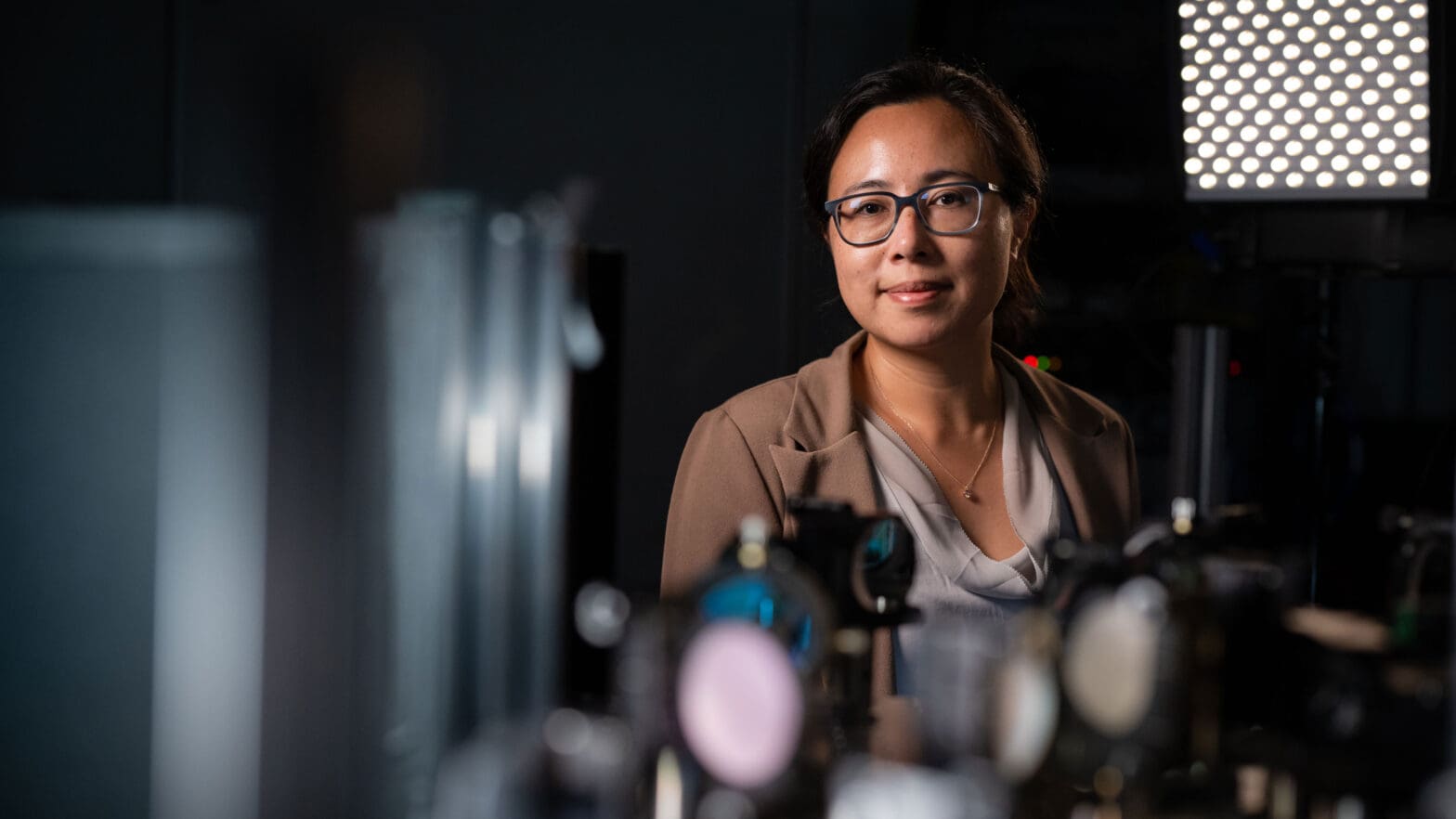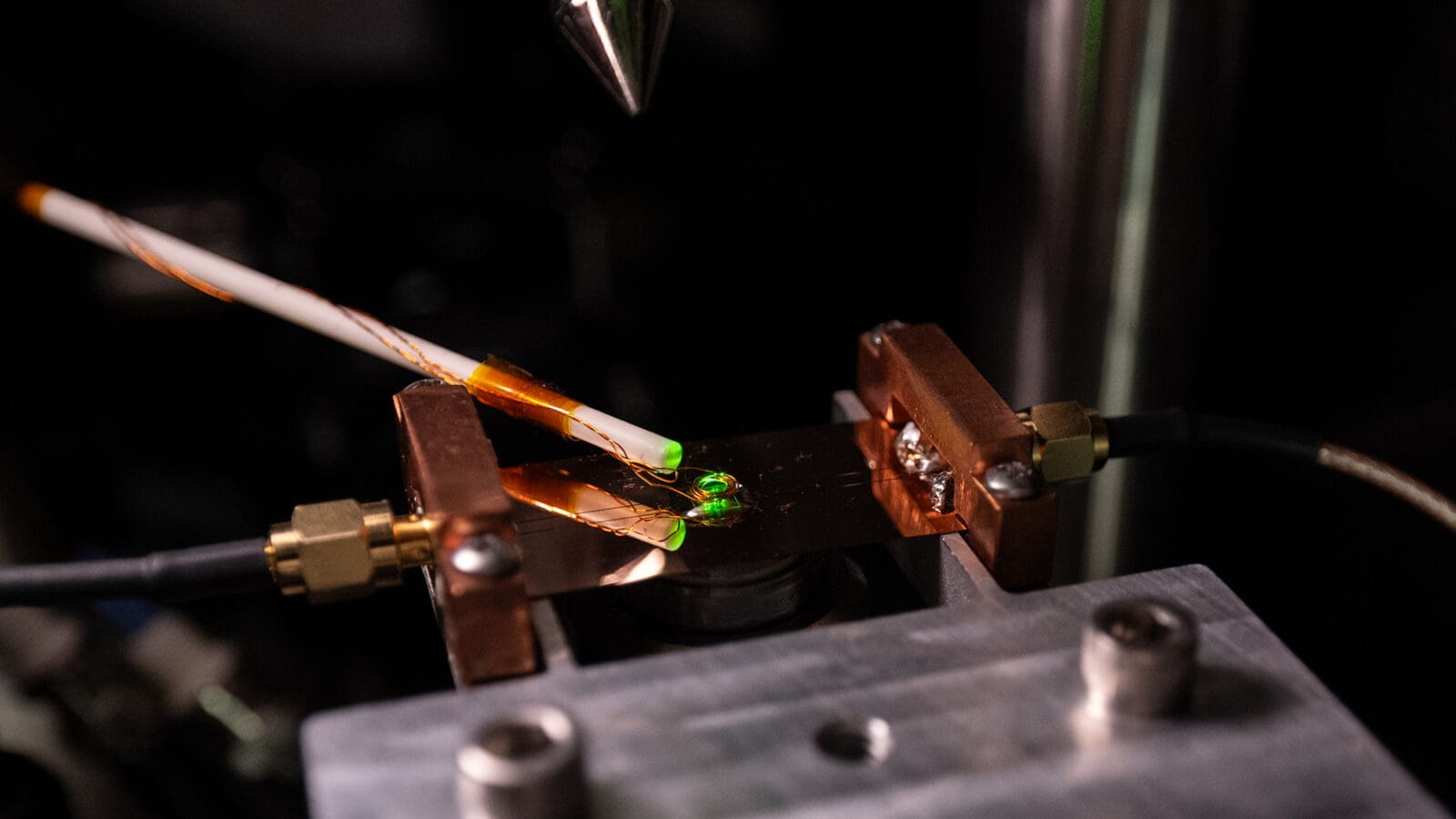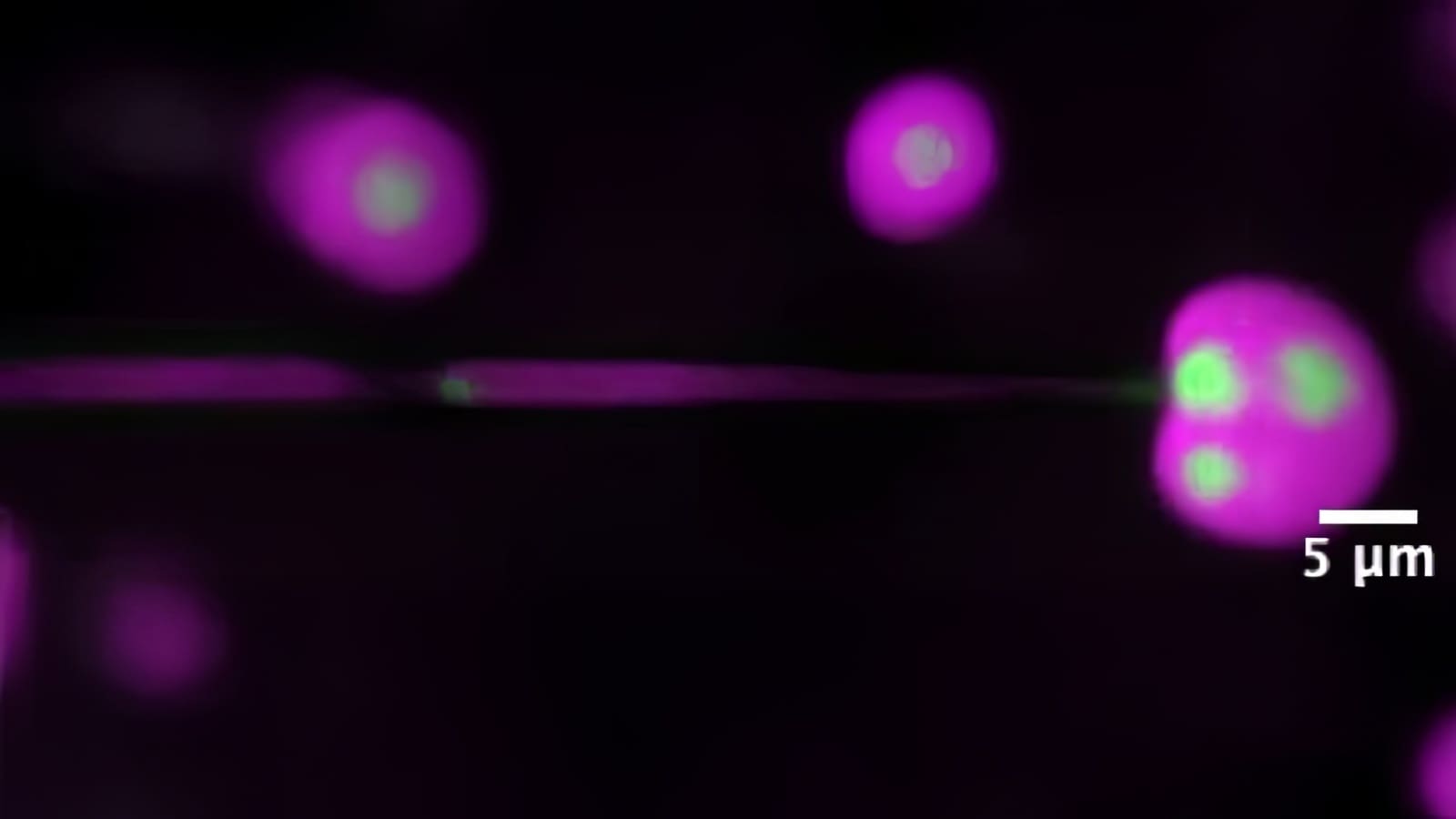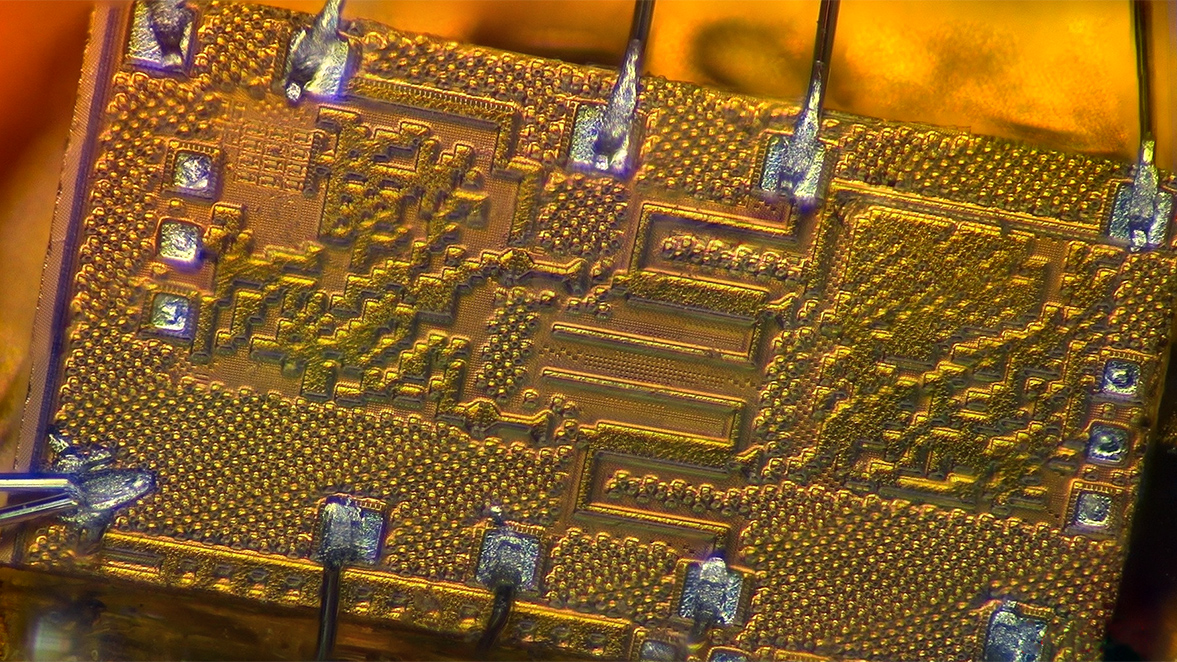Controlled defects in the dense lattice of a diamond’s carbon matrix create one of the few systems available for exploring quantum phenomena at room temperature, instead of the supercooled environment typically required. The problem is creating precise defects in diamond’s adamantine structure.
Nathalie de Leon, an associate professor of electrical and computer engineering, has pioneered the production of diamonds with calibrated defects. Diamond is made up of tightly packed carbon atoms, and de Leon’s team specializes in replacing two carbon atoms with one of nitrogen and a carefully placed empty space, or vacancy, in the atomic lattice.
These introduced defects, called nitrogen-vacancy (NV) centers, have useful quantum properties. The vacancy can trap electrons that spin in a controlled manner. The way the electrons spin — a promising feature for encoding
quantum information — is exquisitely sensitive to pulses of laser light, microwave radiation, or magnetic fields.
The NV centers’ sensitivity also opens a path toward imaging the structures of single molecules. By measuring the tiny magnetic fields arising from electrons and nuclei, scientists could use the NV centers to study the structures of molecules like proteins, which are critical to cellular functions.
To get a picture of the molecule, it needs to hold still, and binding molecules to diamond is incredibly difficult. In fact, it had eluded efforts for decades until de Leon, Princeton chemistry professor Robert Knowles, and their collaborators uncovered a chemical technique for attaching target molecules. Now, Lila Rodgers, a Ph.D. student who was part of the research
team, is working to improve the method. Besides uncovering new chemistry to bond different kinds of molecules, Rodgers is working to eliminate microscopic nicks or rough spots caused by the process that could interfere with a sensor.
This type of single-molecule sensing could improve the ability to study the dynamic structures of proteins as they change in response to their environment — a potential boon to biology and pharmaceutical research, said Rodgers.








